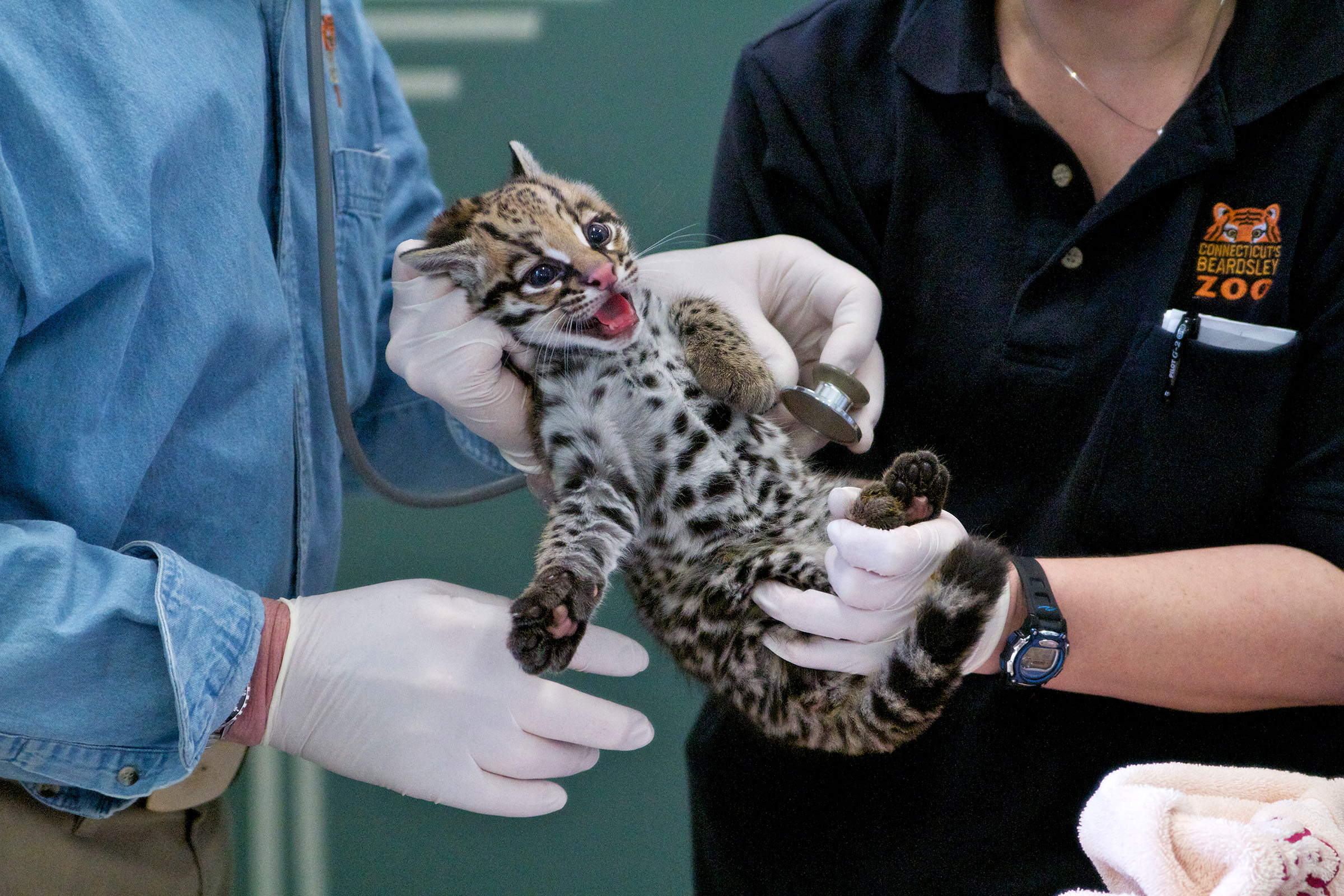Endangered Ocelot Born Following Novel Artificial Insemination Procedure
First Successful Oviductal AI in Any Wild Cat Species
CINCINNATI – (March 7, 2011) A Brazilian ocelot kitten was born on January 22, 2011 at Connecticut’s Beardsley Zoo following a laparoscopic oviductal artificial insemination (AI) procedure conducted by scientists from the Cincinnati Zoo & Botanical Garden’s Lindner Center for Conservation and Research of Endangered Wildlife (CREW). This pregnancy and birth are the first ever in a wild cat species using this new oviductal insemination technique.
Link to video – http://www.youtube.com/watch?v=ZCbdf_4TTMI
To produce this kitten, the Beardsley Zoo’s female ocelot, “Kuma”, was treated with two hormones (equine chorionic gonadotropin, eCG; porcine luteinizing hormone, pLH) to stimulate ovarian follicle growth and ovulation and was inseminated with freshly-collected semen from the Beardsley Zoo’s male ocelot, “Ozzie”. Drs. Bill Swanson and Colleen Lambo from CREW performed the insemination using laparoscopy or minimally invasive surgery. Laparoscopic AI allows the veterinarian to visualize the reproductive tract, evaluate the female’s ovarian response to the hormones and deposit the semen into the uterus in close proximity to the oviducts. The motile spermatozoa then swim up into the oviducts to fertilize the ovulated oocytes.
As Dr. Swanson explained, “For this recent ocelot AI, a new approach was used. Instead of injecting the semen into the uterus, we deposited the semen directly into the oviducts through a cannula threaded into the oviductal lumen. In comparative research with domestic cats, we discovered that this more direct approach greatly improved our pregnancy success”. This method typically requires fewer spermatozoa to produce a pregnancy, potentially allowing more AIs to be performed using a single semen sample or to use spermatozoa of poorer quality such as occurs with cryopreservation. Following hormone treatment, Kuma had three ovulations on her ovaries and was inseminated in both oviducts with a total of six million motile spermatozoa. Pregnancy was diagnosed 57 days after AI by monitoring of fecal progesterone levels and a single healthy kitten was born following an 81 day gestation.
This is the second kitten born to the mother, Kuma, after AI, and just the fourth pregnancy ever produced by AI in ocelots (all performed by Dr. Swanson). Kuma’s first kitten was born on Oct. 31st, 2008 following a laparoscopic uterine AI procedure.
Because Kuma had been injured as a kitten and lost one of her rear legs as a consequence, she is incapable of natural breeding with a male and could only become pregnant by AI. As one of only 30 Brazilian ocelots maintained in North American zoos, she is very important genetically to the zoo population.
The Ocelot Species Survival Plan (SSP), which manages the ocelot population in North American zoos, requested that CREW scientists attempt the AI procedures with Kuma to allow her to pass her valuable genes onto the next generation. Her ability to become pregnant after AI on two separate occasions is a testament to the scientific knowledge gained from nearly 20 years of reproductive research with domestic cats and ocelots. The success of this new AI method may provide conservationists with an invaluable tool for propagating and conserving ocelots and other endangered cat species.

